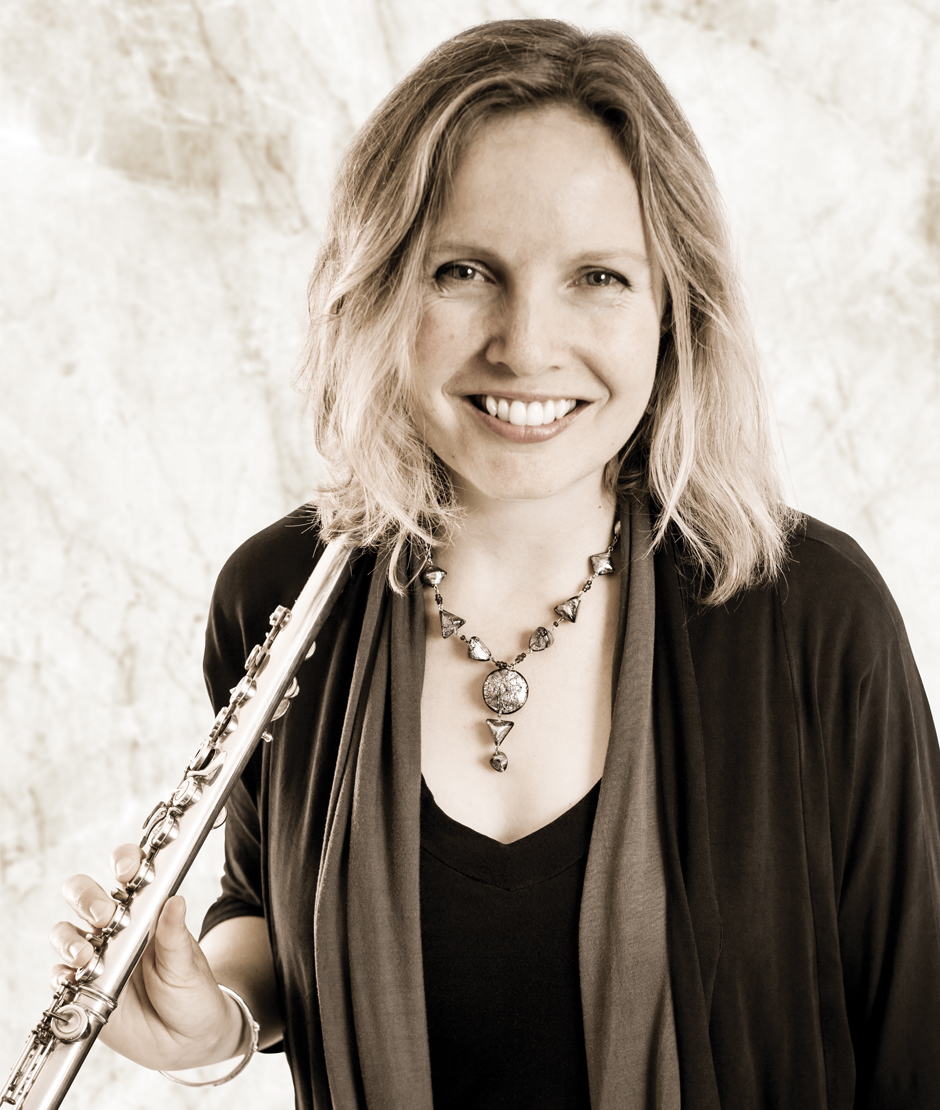Two Thousand Flutes at the Library of Congress
By Stephen Brookes • The Washington Post • May 3, 2015
From its title, you might think “Two Thousand Flutes” would be among the more massive — and slightly alarming — events in the history of music. But the demonstration and concert at the Library of Congress on Saturday afternoon by flutist Lorna McGhee was largely a solo affair and an overview of the instrument that showcased more than a dozen of the thousands of rare flutes in the Library’s Dayton C. Miller Flute Collection. In fact, the flutes themselves were a good part of the draw. McGhee, the principal flutist for the Pittsburgh Symphony Orchestra, shared the stage with Carol Lynn Ward-Bamford, the curator of the collection, for an engaging discussion that featured a 16th-century end-blown flute, a yard-long walking-stick flute, an odd but surprisingly sonorous plexiglass flute and many others — including historic instruments made by Theobald Boehm, Johann Joachim Quantz and Louis Lot that transformed the flute from a breathy wooden tube to the precise, high-powered instrument it is today.
In fact, the flutes themselves were a good part of the draw. McGhee, the principal flutist for the Pittsburgh Symphony Orchestra, shared the stage with Carol Lynn Ward-Bamford, the curator of the collection, for an engaging discussion that featured a 16th-century end-blown flute, a yard-long walking-stick flute, an odd but surprisingly sonorous plexiglass flute and many others — including historic instruments made by Theobald Boehm, Johann Joachim Quantz and Louis Lot that transformed the flute from a breathy wooden tube to the precise, high-powered instrument it is today.
McGhee, playing her own silver Altus flute, opened the afternoon with Francis Poulenc’s 1957 “Sonata for Flute and Piano.” Urbane, elegant and Parisian to its bones, it’s one of the great charmers of the repertoire, and McGhee (with Ryo Yanagitani at the piano) turned in a nimble, light-filled reading, sustained on her exceptionally rich and vibrant tone.
She switched to a copy of an 18th-century wooden Quantz flute for Francois Couperin’s gently beguiling “Le Rossignol en Amour,” then back to the modern flute for the Corrente movement from Bach’s Partita in A Minor for solo flute, BWV 1013, and an excerpt from Marin Marais’s wonderfully expressive “Les Folies d’Espagne.”
Those solo works allowed McGhee to underscore different aspects of the flute sound, all of which seemed to come together in an evocative and richly nuanced performance of Debussy’s iconic “Syrinx,” L. 129, which she played on a 19th-century Lot silver flute (much as Louis Fleury may have done for the 1913 premiere). A display of Native American flutes led to “Winter Spirits,” an incantatory solo work by flutist and composer Katherine Hoover that seemed to soar with colorful, highly idiomatic writing for the flute.
But the high point of the concert (which also had been presented at the Evermay estate in Georgetown the night before, in conjunction with the S&R Foundation) may have been the “Fantaisie Brillante on Themes from Bizet’s ‘Carmen,’ ” arranged in 1900 by the French flutist Francois Borne. Joined again by Yanagitani, McGhee turned in a virtually flawless rendition of this virtuosic and wildly exuberant showpiece, a tsunami of coloratura writing that brought the audience to its feet — and then to the stage for a post-concert look at the display of flutes, which attracted as much admiring attention as the performers themselves.


Reader Comments